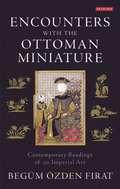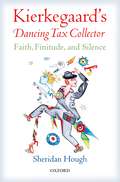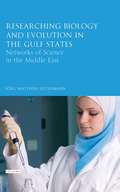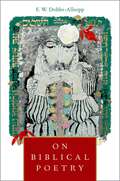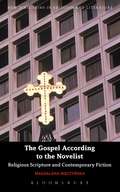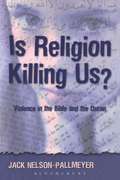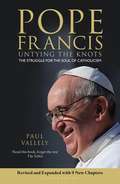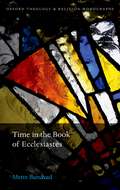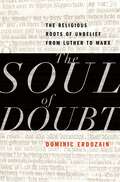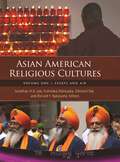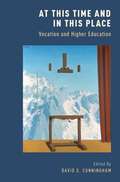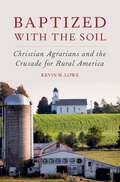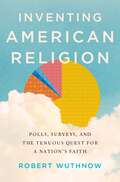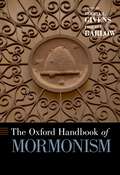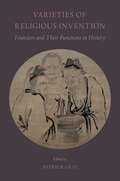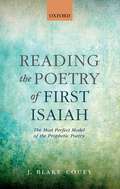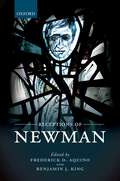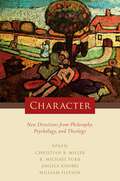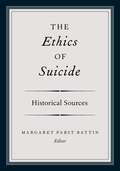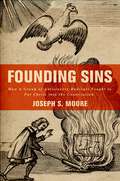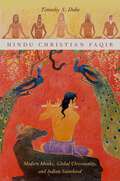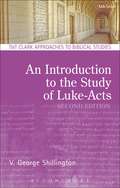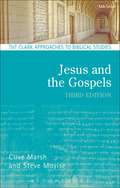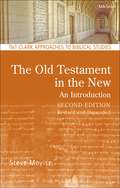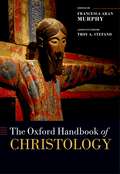- Table View
- List View
Encounters with the Ottoman Miniature: Contemporary Readings of an Imperial Art (International Library of Visual Culture)
by Begüm Özden FiratThe dominant form of Ottoman pictorial art until the eighteenth century, miniatures have traditionally been studied as reflecting the socio-historical contexts, aesthetic concerns and artistic tastes of the era within which they were produced. Begüm Özden F?rat proposes instead a radical re-reading of seventeenth- and eighteenth-century miniatures in the light of contemporary critical theory, highlighting the viewer's encounter with the image. Encounters with the Ottoman Miniature employs contemporary concepts such as the gaze, frame/framing, reading and re-reading, drawing on thinkers such as Walter Benjamin, Roland Barthes and Gilles Deleuze to establish the vibrant cultural agency of miniature paintings. With analysis that illuminates both the social and political situations in which these miniatures were painted as well as emphasising the miniature's contemporary relevance, F?rat presents an important new re-imagining of this art form
Kierkegaard's Dancing Tax Collector: Faith, Finitude, and Silence
by Sheridan HoughKierkegaard's account of the life of faith turns on an astonishing claim: a person living faithfully continually enjoys, and takes part in, everything. What can this assertion actually mean? The pseudonymous author of Fear and Trembling, Johannes de silentio, imagines what such a human being might look like; indeed, as de silentio puts it, 'He looks just like a tax collector'. This seemingly ordinary person, in his 'movements' of faith, finds infinite significance and an absorbing joy in his environment, from moment to moment. How does he do it? This characterization of faithful comportment is unique in the Kierkegaardian corpus, and becomes the tantalizing centerpiece of an exploration of the Kierkegaardian self. Sheridan Hough embarks on a groundbreaking 'existential/ phenomenological' investigation of the uncanny abilities of the faithful life through an analysis of Kierkegaard's 'spheres of existence'; each sphere reveals a specific kind of significance, and indeed a way of 'being in the world'. Hough employs a distinctively original narrative voice, one that examines Kierkegaard's ontology from the perspective of his pseudonymous voices, and from the characters that they create. This approach is both descriptive and diagnostic: by understanding what someone living out an aesthetic, ethical, or a religious existence seeks to achieve, the phenomenon of the faithful life, and its demands, comes into sharper focus. This faith is not simply some thought about God's greatness-indeed, the 'propositional content' of faith is a central issue of the book. Instead, Hough argues that Kierkegaardian faith is the hallmark of the fullest flowering of a human life, one achieved in ways only hinted at in the demeanor of the cheerful and enigmatic 'tax collector,' an existential task in which 'temporality, finitude is what it is all about'.
Researching Biology and Evolution in the Gulf States: Networks of Science in the Middle East (Library of Modern Middle East Studies)
by Jörg Matthias DetermannOfficials and religious scholars in the Gulf states have repeatedly banned the teaching and researching of the theory of evolution because of its association with atheism. But Jörg Matthias Determann argues here that, despite official prohibition, research on biological evolution has flourished, due in large part to the development of academic and professional networks. This book traces these networks through the history of various branches of biology, including botany, conservation research, ornithology and palaeontology. Typical of rentier societies, some of the scientific networks in this region consist of vertical patron-client relationships. For example, those in power who are interested in wildlife conservation have been known to offer patronage to biologists working on desert ecology. However, just as important are the horizontal links between scientists both within the Gulf region and beyond. Because most accounts of evolution explained the development of species without referring to divine action, the theory of evolution also became associated with atheism. The theory thus also became one of the most prominent flashpoints between modern science and Abrahamic religions. In Saudi Arabia, not only religious, but even science textbooks by the Ministry of Education promote an account of life's creation by God. But through interviews with biologists working in the Gulf monarchies and through analysis of their publications, Determann finds that it has been possible for some researchers to support the theory of evolution in an environment which has been shaped by official challenges to the theory. By asking what has enabled these scientists to incorporate the theory into their work, he offers a new perspective on science in the Middle East: examining the work and lives of individuals rather than just focusing on the state and its policies. Researching Science in Arabia furthermore provides the argument that through the work of these individuals, we should look at the Arab world as an area interconnected with global science, and therefore fully integrated into the scientific and technological advances being pioneered worldwide.
On Biblical Poetry
by F.W. Dobbs-AllsoppOn Biblical Poetry takes a fresh look at the nature of biblical Hebrew poetry beyond its currently best-known feature, parallelism. F.W. Dobbs-Allsopp argues that biblical poetry is in most respects just like any other verse tradition, and therefore biblical poems should be read and interpreted like other poems, using the same critical tools and with the same kinds of guiding assumptions in place. He offers a series of programmatic essays on major facets of biblical verse, each aspiring to alter currently regnant conceptualizations in the field and to show that attention to aspects of prosody--rhythm, lineation, and the like--allied with close reading can yield interesting, valuable, and even pleasurable interpretations. What distinguishes the verse of the Bible, says Dobbs-Allsopp, is its historicity and cultural specificity, those peculiar encrustations and encumbrances that typify all human artifacts. Both the literary and the historical, then, are in view throughout. The concluding essay elaborates a close reading of Psalm 133. This chapter enacts the final movement to the set of literary and historical arguments mounted throughout the volume--an example of the holistic staging which, Dobbs-Allsopp argues, is much needed in the field of Biblical Studies.
The Gospel According to the Novelist: Religious Scripture and Contemporary Fiction (New Directions in Religion and Literature)
by Magdalena MaczynskaWhy have so many prominent literary authors-from Philip Pullman and José Saramago to Michèle Roberts and Colm Tóibím-recently rewritten the canonical story of Jesus Christ? What does that say about our supposedly secular age? In this insightful study, Magdalena Maczynska defines and examines the genre of scriptural metafiction: novels that not only transform religious texts but also draw attention to these transformations. In addition to providing rich examples and close readings, Maczynska positions literary studies within interdisciplinary debates about religion and secularity. Her book demonstrates a surprising turn of events: even as contemporary novelists deconstruct the traditional categories of “secular” and “sacred” writing, they open up new spaces for scripture in contemporary culture.
Is Religion Killing Us?: Violence in the Bible and the Quran
by Jack Nelson-PallmeyerCoverage of recent world events has focused on violence associated with Islam. In this courageous and controversial book, Jack Nelson-Pallmeyer claims that this narrow view ignores the broader and unfortunate relationship between human violence and the sacred texts of Jews, Christians, and Muslims. Both the Bible and the Quran, he believes, are riddled with violent images of God and with passages that can be reasonably interpreted to justify violence against enemies in service to God's will.According to Nelson-Pallmeyer, many wondered how Muslims could in God's name kill innocent civilians by flying airplanes into the World Trade Center and the Pentagon. Few, however, questioned U.S. leaders and citizens invoking God's name, or assuming God's favor, to fight the responsive "war against terrorism." And in the Middle East, the roots of the continuing and seemingly unsolvable conflict and violence are to be found in both the Torah and the Quran.Nelson-Pallmeyer challenges the understanding of power that lies at the heart of the sacred texts of Judaism, Christianity, and Islam. He argues that nonviolence is powerful and necessary and that a viable future for human beings and the planet depends on challenging the ways in which sacred texts reinforce visions of power that are largely abusive. A viable future, he says, depends on re-visioning God's power.Jack Nelson-Pallmeyer is Assistant Professor of Justice and Peace Studies at the University of St. Thomas in St. Paul, Minnesota. For more than twenty years he has studied and written about the relationship of religion, violence, and peace, and his books include Jesus Against Christianity: Reclaiming the Missing Jesus (Trinity Press International) and School of Assassins: Guns, Greed, and Globalization.
Pope Francis: The Struggle for the Soul of Catholicism: Revised and Updated Edition
by Paul VallelyFor the past two years Pope Francis has enchanted and bewildered the world in equal measure with his compassion and his contradictions. Expanding greatly on his acclaimed earlier book Pope Francis: Untying the Knots, Paul Vallely reexamines the complex past of Jorge Mario Bertoglio and adds nine new chapters, revealing many untold, behind-the-scenes stories from his first years in office that explain this Pope of paradoxes. Vallely lays bare the intrigue and in-fighting surrounding Francis's attempt to cleanse the scandal-ridden Vatican Bank. He unveils the ambition and arrogance of top bureaucrats resisting the Pope's reform of the Roman Curia, as well as the hidden opposition at the highest levels that is preventing the Church from tackling the sex abuse crisis. He explains the ambivalence of Pope Francis towards the role of women in the Church, which has frustrated American Catholic women in particular. And Vallely charts the battle lines that are being drawn between Francis and conservatives and traditionalists talking of schism in this struggle for the soul of the Catholic Church. Consistently Francis has show a willingness to discuss issues previously considered taboo, such as the ban on those who divorce and remarry receiving Communion, his liberal instincts outraging traditionalists in the Vatican and especially in the Church hierarchy in the United States. At the same time, many of his statements have reassured conservative elements that he is not, in fact, as radical as he might appear.Behind the icon of simplicity that Pope Francis projects is a steely and sophisticated politician who has learned from the many mistakes of his past. The Pope with the winning smile was previously a bitterly divisive figure. In his decade as leader of Argentina's Jesuits left that religious order deeply split. His behavior during Argentina's Dirty War, when military death squads snatched innocent people from the streets, raised serious questions. Yet after a period of exile and what he has revealed as 'a time of great interior crisis' he underwent an extraordinary transformation - on which Vallely sheds new and fascinating light. The man who had been a strict conservative authoritarian was radically converted into a listening participative leader who became Bishop of the Slums, making enemies among Argentina's political classes in the process. Charting Francis's remarkable journey to the Vatican and his first years at work there, Paul Vallely has produced a deeply nuanced and insightful portrait of perhaps the most influential person in the world today. 'Pope Francis,' he writes, 'has not just demonstrated a different way of being a pope. He has shown the world a different way of being a Catholic.'
Time in the Book of Ecclesiastes (Oxford Theology and Religion Monographs)
by Mette BundvadTime in the Book of Ecclesiastes offers a detailed analysis of the theme of time in Ecclesiastes. The book of Ecclesiastes engages at length with this theme and presents a sophisticated exploration of humanity's temporal situation. Ecclesiastes depicts the temporal reality as extremely problematic for human attempts to live meaningfully. This is especially due to the tension which the book's narrator perceives between the cosmic, temporal reality and the human experience of time. Consequently, humanity's cognitive engagement with time becomes a particular focus in his exploration of life under the sun. Time is not only a central theme in Ecclesiastes; it is also a theme which provides this difficult book with a degree of coherence and renders meaningful some of the passages which otherwise seem contradictory. Furthermore, the explicit exploration in Ecclesiastes of the theme of time provides an excellent entry-point into the broader discussion regarding the presence and character of temporal thinking in the Hebrew Bible more generally. Mirroring the interest in Ecclesiastes for both, Dr Mette Bundvad discusses the biblical book's presentation of both the cosmic temporal structures and the framework of the human past, present and future. It offers close readings of a series of passages in which the theme of time is especially prominent, thus demonstrating how the discussion of time works in Ecclesiastes and how it interacts with other of the book's key-themes.
The Soul of Doubt: The Religious Roots of Unbelief from Luther to Marx
by Dominic ErdozainIt is widely assumed that science is the enemy of religious faith. The idea is so pervasive that entire industries of religious apologetics converge around the challenge of Darwin, evolution, and the "secular worldview." This book challenges such assumptions by proposing a different cause of unbelief in the West: the Christian conscience. Tracing a history of doubt and unbelief from the Reformation to the age of Darwin and Karl Marx, Dominic Erdozain argues that the most powerful solvents of religious orthodoxy have been concepts of moral equity and personal freedom generated by Christianity itself. Revealing links between the radical Reformation and early modern philosophers such as Baruch Spinoza and Pierre Bayle, Erdozain demonstrates that the dynamism of the Enlightenment, including the very concept of "natural reason" espoused by philosophers such as Voltaire, was rooted in Christian ethics and spirituality. The final chapters explore similar themes in the era of Darwin and Marx, showing how moral revolt preceded and transcended the challenges of evolution and "scientific materialism" in the unseating of religious belief. The picture that emerges is not of a secular challenge to religious faith, but a series of theological insurrections against divisive accounts of Christian orthodoxy.
Asian American Religious Cultures [2 volumes]: [2 volumes] (American Religious Cultures)
A resource ideal for students as well as general readers, this two-volume encyclopedia examines the diversity of the Asian American and Pacific Islander spiritual experience.Despite constituting a fairly small proportion of the U.S. population—roughly 5 percent—Asian Americans are a widely diverse group with equally heterogeneous religious beliefs and traditions. This encyclopedia provides a single source for authoritative information on the Asian American and Pacific Islander religious experience, addressing South Asian Americans, such as Indian Americans and Pakistani Americans; East Asian Americans, including Chinese Americans, Japanese Americans, and Korean Americans; and Southeast Asian Americans, whose ethnicities include Filipino Americans, Thai Americans, and Vietnamese Americans. Pacific Islanders include Hawaiians, Samoans, Marshallese, Tongan, and Chamorro. The coverage includes not only traditional eastern belief systems and traditions such as Buddhism, Confucianism, and Hinduism as well as Micronesian and Polynesian religious traditions in the United States, but also the culture and religious rituals of Asian American Christians.
At This Time and In This Place: Vocation and Higher Education
Seeking to deepen current scholarly engagement with vocational exploration in both theory and practice, At This Time and In This Place champions the themes of calling and vocation as key elements of effective undergraduate education. Growing out of a year-long seminar sponsored by the Council of Independent Colleges and its Network for Vocation in Undergraduate Education (NetVUE), this book brings together a nationwide group of scholars from a variety of disciplines in order to produce new scholarly writing on this topic. It offers a historical and theoretical account of vocational reflection and discernment and also suggests how these endeavors can be carried out through specific educational practices. Attending both to the current state of higher education and to broader cultural trends, the contributors examine the contours of vocation from historical, theological, and philosophical perspectives. They consider the relationship between vocation and virtue, both of which encourage the cultivation of habits that lead to a life marked by flourishing and fulfillment-for oneself and for others. The authors also discuss how to engage students in actively reflecting on questions of meaning and purpose through classroom conversations, co-curricular activities, programs for community engagement, and attention to a campus's physical features. At This Time and In This Place offers a compelling argument for vocational reflection and discernment in undergraduate education and represents a significant contribution to the emerging scholarly literature in this field.
Baptized with the Soil: Christian Agrarians and the Crusade for Rural America
by Kevin M. LoweIn the early twentieth century, many Americans were troubled by the way agriculture was becoming increasingly industrial and corporate. Mainline Protestant churches and cooperative organizations began to come together to promote agrarianism: the belief that the health of the nation depended on small rural communities and family farms. In Baptized with the Soil, Kevin M. Lowe offers for the first time a comprehensive history of the Protestant commitment to rural America. Christian agrarians believed that farming was the most moral way of life and a means for people to serve God by taking care of the earth that God created. When the Great Depression hit, Christian agrarians worked harder to keep small farmers on the land. They formed alliances with state universities, cooperative extension services, and each other's denominations. They experimented with ways of revitalizing rural church life--including new worship services like Rural Life Sunday, and new strategies for raising financial support like the Lord's Acre. Because they believed that the earth was holy, Christian agrarians also became leaders in promoting soil conservation. Decades before the environmental movement, they inspired an ethic of environmental stewardship in their congregations. They may not have been able to prevent the spread of industrial agribusiness, but their ideas have helped define significant and long-lasting currents in American culture.
Inventing American Religion: Polls, Surveys, and the Tenuous Quest for a Nation's Faith
by Robert WuthnowToday, a billion-dollar-a-year polling industry floods the media with information. Pollsters tell us not only which political candidates will win, but how we are practicing our faith. How many Americans went to church last week? Have they been born again? Is Jesus as popular as Harry Potter? Polls tell us that 40 percent of Americans attend religious services each week. They show that African Americans are no more religious than white Americans, and that Jews are abandoning their religion in record numbers. According to leading sociologist Robert Wuthnow, none of that is correct. Pollsters say that attendance at religious services has been constant for decades. But during that time response rates in polls have plummeted, robotic "push poll" calls have proliferated, and sampling has become more difficult. The accuracy of political polling can be known because elections actually happen. But there are no election results to show if the proportion of people who say they pray every day or attend services every week is correct. A large majority of the public doubts that polls can be trusted, and yet night after night on TV, polls experts sum up the nation's habits to an eager audience of millions. Inventing American Religion offers a provocative new argument about the influence of polls in contemporary American society. Wuthnow contends that polls and surveys have shaped-and distorted-how religion is understood and portrayed in the media and also by religious leaders, practitioners, and scholars. He calls for a robust public discussion about American religion that extends well beyond the information provided by polls and surveys, and suggests practical steps to facilitate such a discussion, including changes in how the results of polls and surveys are presented.
The Oxford Handbook of Mormonism (Oxford Handbooks)
Winner of the Best Anthology Book Award from the John Whitmer Historical Association Winner of the Special Award for Scholarly Publishing from the Association for Mormon Letters Scholarly interest in Mormon theology, history, texts, and practices--what makes up the field now known as Mormon studies--has reached unprecedented levels, making it one of the fastest-growing subfields in religious studies. In this volume, Terryl Givens and Philip Barlow, two leading scholars of Mormonism, have brought together 45 of the top experts in the field to construct a collection of essays that offers a comprehensive overview of scholarship on Mormons. The book begins with a section on Mormon history, perhaps the most well-developed area of Mormon studies. Chapters in this section deal with questions ranging from how Mormon history is studied in the university to the role women have played over time. Other sections examine revelation and scripture, church structure and practice, theology, society, and culture. The final two sections look at Mormonism in a larger context. The authors examine Mormon expansion across the globe--focusing on Mormonism in Latin America, the Pacific, Europe, and Asia--in addition to the interaction between Mormonism and other social systems, such as law, politics, and other faiths. Bringing together an impressive body of scholarship, this volume reveals the vast range of disciplines and subjects where Mormonism continues to play a significant role in the academic conversation. The Oxford Handbook of Mormonism will be an invaluable resource for those within the field, as well as for people studying the broader, ever-changing American religious landscape.
Varieties of Religious Invention: Founders and Their Functions in History
At the origins of the major religious traditions one typically finds a seminal figure. Names such as Jesus, Muhammad, Confucius, and Moses are well known, yet their status as "founders" has not gone uncontested. Does Paul deserve the credit for founding Christianity? Is Laozi the father of Daoism, or should that title belong to Zhuangzi? What is at stake, if anything, in debates about the historical Buddha? What assumptions are implicit in the claim that Hinduism is a religion without a founder? The essays in Varieties of Religious Invention do not attempt to settle these perennial arguments. Rather, they consider the subtexts of such debates as an exercise in comparative religion: Who engages in them? To whom do they matter, and when? To what extent are origins thought to define the essence of a religion? When is development in a religious tradition perceived as deviation from its roots? In what ways do arguments about founders serve as proxies for broader cultural, theological, political, or ideological questions? What do they reveal about the ways in which the past is remembered and authority negotiated? Surveying the landscape shaped by these questions within each tradition, the authors provide insights and novel perspectives about the individual religions, and about the study of world religions more generally.
Reading the Poetry of First Isaiah: The Most Perfect Model of the Prophetic Poetry
by J. Blake CoueyReading the Poetry of First Isaiah provides a literary and historical study of the prophetic poetry of First Isaiah, an underappreciated but highly sophisticated collection of poems in the Hebrew Bible. Informed by recent developments in biblical studies and broader trends in the study of poetry, Dr J. Blake Couey articulates a fresh account of Biblical Hebrew poetry and argues that careful attention to poetic style is crucial for the interpretation of these texts. Discussing lineation, he explains that lines serve important rhetorical functions in First Isaiah, but the absence of lineated manuscripts from antiquity makes it necessary to defend proposed line divisions using criteria such as parallelism, rhythm, and syntax. He examines poetic structure, and highlights that parallelism and enjambment create a sense of progression between individual lines, which are tightly joined to form couplets, triplets, quatrains, and occasionally even longer groups. Later, Dr Couey treats imagery and metaphor in First Isaiah. A striking variety of images-most notably agricultural and animal imagery-appear in diverse contexts in these poems, often with rich figurative significance.
Receptions of Newman
Over the past two centuries, few Christians have been more influential than John Henry Newman. His leadership of the Oxford Movement shaped the worldwide Anglican Communion and many Roman Catholics hold him as the brains behind reforms of the Second Vatican Council. His life-story has been an inspiration for generations and many commemorated him as a saint even before he officially became the Blessed John Henry Newman in 2010. His writings on theology, philosophy, education, and history continue to be essential texts. Nonetheless, such a prominent thinker and powerful personality also had detractors. In this volume, scholars from across the disciplines of theology, philosophy, education, and history examine the different ways in which Newman has been interpreted. Some of the essays attempt to rescue Newman from his opponents then and now. Others seek to save him from his rescuers, clearing away misinterpretations so that Newman's works may be encountered afresh. The 11 essays in Receptions of Newmans show why Newman's ideas about religion were so important in the past and continue to inform the present.
Character: New Directions from Philosophy, Psychology, and Theology
This collection contains some of the best new work being done on the subject of character from the perspectives of philosophy, theology, and psychology. From creating a virtual reality simulation of the Milgram shock experiments to understanding the virtue of modesty in Muslim societies to defending soldiers' moral responsibility for committing war crimes, these 31 chapters break much new ground and significantly advance our understanding of character. The main topics covered fall under the heading of our beliefs about character, the existence and nature of character traits, character and ethical theory, virtue epistemology, the nature of particular virtues, character development, and challenges to character and virtue from neuroscience and situationism. These papers stem from the work of the Character Project (www.thecharacterproject.com) at Wake Forest University, generously supported by the John Templeton Foundation. This collection is truly unique in featuring the work of many young, up-and-coming voices in their fields with new perspectives to offer. Together their work will significantly shape discussions of character for years to come.
The Ethics of Suicide: Historical Sources
Is suicide wrong, profoundly morally wrong? Almost always wrong, but excusable in a few cases? Sometimes morally permissible? Imprudent, but not wrong? Is it sick, a matter of mental illness? Is it a private matter or a largely social one? Could it sometimes be right, or a "noble duty," or even a fundamental human right? Whether it is called "suicide" or not, what role may a person play in the end of his or her own life? This collection of primary sources--the principal texts of ethical interest from major writers in western and nonwestern cultures, from the principal religious traditions, and from oral cultures where observer reports of traditional practices are available, spanning Europe, Asia, the Middle East, Africa, Oceania, the Arctic, and North and South America--facilitates exploration of many controversial practical issues: physician-assisted suicide or aid-in-dying; suicide in social or political protest; self-sacrifice and martyrdom; suicides of honor or loyalty; religious and ritual practices that lead to death, including sati or widow-burning, hara-kiri, and sallekhana, or fasting unto death; and suicide bombings, kamikaze missions, jihad, and other tactical and military suicides. This collection has no interest in taking sides in controversies about the ethics of suicide; rather, rather, it serves to expand the character of these debates, by showing them to be multi-dimensional, a complex and vital part of human ethical thought.
Founding Sins: How a Group of Antislavery Radicals Fought to Put Christ into the Constitution
by Joseph S. MooreThe Covenanters, now mostly forgotten, were America's first Christian nationalists. For two centuries they decried the fact that, in their view, the United States was not a Christian nation because slavery was in the Constitution but Jesus was not. Having once ruled Scotland as a part of a Presbyterian coalition, they longed to convert America to a holy Calvinist vision in which church and state united to form a godly body politic. Their unique story has largely been submerged beneath the histories of the events in which they participated and the famous figures with whom they interacted, making them the most important religious movement in American history that no one remembers. Despite being one of North America's smallest religious sects, the Covenanters found their way into every major revolt. They were God's rebels--just as likely to be Patriots against Britain as they were to be Whiskey Rebels against the federal government. As the nation's earliest and most avowed abolitionists, they had a significant influence on the fight for emancipation. In Founding Sins, Joseph S. Moore examines this forgotten history, and explores how Covenanters profoundly shaped American's understandings of the separation of church and state. While modern arguments about America's Christian founding usually come from the right, the Covenanters have a more complicated legacy. They fought for an explicitly Christian America in the midst of what they saw as a secular state that failed the test of Christian nationhood. But they did so on behalf of a cause--abolition--that is traditionally associated with the left. Though their attempts to insert God into the Constitution ultimately failed, Covenanters set the acceptable limits for religion in politics for generations to come.
Hindu Christian Faqir: Modern Monks, Global Christianity, and Indian Sainthood (AAR Religion, Culture, and History)
by Timothy S. DobeIn the mid-nineteenth century, the American missionary James Butler predicted that Christian conversion and British law together would eradicate Indian ascetics. His disgust for Hindu holy men (sadhus), whom he called "saints," "yogis," and "filthy fakirs," was largely shared by orientalist scholars and British officials, who likewise imagined these religious elites to be a leading symptom of India's degeneration. Yet within some thirty years of Butler's writing, modern Indian ascetics such as the neo-Vedantin Hindu Swami Rama Tirtha (1873-1906) and, paradoxically, the Protestant Christian convert Sadhu Sundar Singh (1889-1929) achieved international fame as embodiments of the spiritual superiority of the East over the West. Timothy S. Dobe's fine-grained account of the lives of Sundar Singh and Rama Tirtha offers a window on the surprising reversals and potentials of Indian ascetic "sainthood" in the colonial contact zone. His study develops a new model of Indian holy men that is historicized, religiously pluralistic, and located within the tensions and intersections of ascetic practice and modernity. The first in-depth account of two internationally-recognized modern holy men in the colonially-crucial region of Punjab, Hindu Christian Faqir offers new examples and contexts for thinking through these wider issues. Drawing on unexplored Urdu writings by and about both figures, Dobe argues not only that Hinduism and Protestant Christianity are here intimately linked, but that these links are forged from the stuff of regional Islamic traditions of Sufi holy men (faqir). He also re-conceives Indian sainthood through an in-depth examination of ascetic practice as embodied religion, public performance, and relationship, rather than as a theological, otherworldly, and isolated ideal.
An Introduction to the Study of Luke-Acts (T&T Clark Approaches to Biblical Studies)
by V. George ShillingtonV. George Shillington introduces readers to the text, texture and context of Luke-Acts in this tried and tested introduction, now in its second edition. Using various approaches currently practiced by biblical scholars Shillington outlines the methods of biblical interpretation and then shows how they might be applied to the texts in question.Through historical criticism Shillington looks at and explains questions of authorship, the time and setting of the composition, sources and historical background. Taking a social-science approach he examines the society and culture of the time. Literary readings include narrative, socio-rhetorical, and audience-response approaches, while a theological reading asks how the literary texture and themes of Luke-Acts shape the convictions of Christian communities, past and present. Incorporating modern approaches in the field, Shillington looks at postcolonial and feminist criticism and how they have changed our understanding of these books. Each chapter concludes with a list of further relevant resources, and pertinent review questions. The text is accompanied by charts and diagrams to illustrate key points of language and structure.
Jesus and the Gospels (T&T Clark Approaches to Biblical Studies)
by Clive Marsh Steve MoyiseThis book offers an ideal introduction to the Gospels and explains why it is that scholars and lay people have such different understandings of the person of Jesus. The first half of the book looks at the main sources for the life of Jesus, principally the Gospels of Matthew, Mark, Luke and John, but also the so-called apocryphal Gospels. The second half of the book begins with an examination of the criteria employed by scholars to determine the earliest and most reliable forms of the tradition. The third edition interacts with developments in modern scholarship, particularly the advance of memory studies. With study questions at the end of each chapter, updated reading lists, and a new chapter bringing scholarship up to date the third edition of this classic text will provide a perfect companion for students coming to grips with academic study of Jesus and the Gospels.
The Old Testament in the New: Second Edition: Revised and Expanded (T&T Clark Approaches to Biblical Studies)
by Steve MoyiseSteve Moyise provides an accessible and well-informed introduction to the Old Testament in the New Testament. Tried and tested in previous editions, it explores the basic issues and offers summaries of the uses of the Old Testament in the Gospels and Acts, in Paul and Hebrews, James, and Revelation. Issues of quotation, allusion and echo are fully explored and placed sensitively in the context of the differing approaches to the interpretation of Old Testament texts. Readers are informed of contemporary debates that have arisen from literary criticism, such as the questions of intertextuality and the uses of allegory. Also discussed are the uses of the Bible in the first century. For the second edition two entirely new chapters on 'Jesus and Scripture' and 'James and 1-3 John' have been added, as well as full revisions to the text where necessary to take account of changes and developments in scholarship. Each chapter includes a summary-conclusion, and extensive and detailed suggestions for further reading. This is an ideal textbook for undergraduate students.
The Oxford Handbook of Christology (Oxford Handbooks)
The Oxford Handbook of Christology brings together 40 authoritative essays considering the theological study of the nature and role of Jesus Christ. This collection offers dynamic perspectives within the study of Christology and provides rigorous discussion of inter-confessional theology, which would not have been possible even 60 years ago. The first of the seven parts considers Jesus Christ in the Bible. Rather than focusing solely on the New Testament, this section begins with discussion of the modes of God's self-communication to us and suggests that Christ's most original incarnation is in the language of the Hebrew Bible. The second section considers Patristics Christology. These essays explore the formation of the doctrines of the person of Christ and the atonement between the First Council of Nicaea in 325 and the eve of the Second Council of Nicaea. The next section looks at Mediaeval theology and tackles the development of the understanding of who Christ was and of his atoning work. The section on 'Reformation and Christology' traces the path of the Reformation from Luther to Bultmann. The fifth section tackles the new developments in thinking about Christ which have emerged in the modern and the postmodern eras, and the sixth section explains how beliefs about Jesus have affected music, poetry, and the arts. The final part concludes by locating Christology within systematic theology, asking how it relates to Christian belief as a whole. This comprehensive volume provides an invaluable resource and reference for scholars, students, and general readers interested in the study of Christology.
